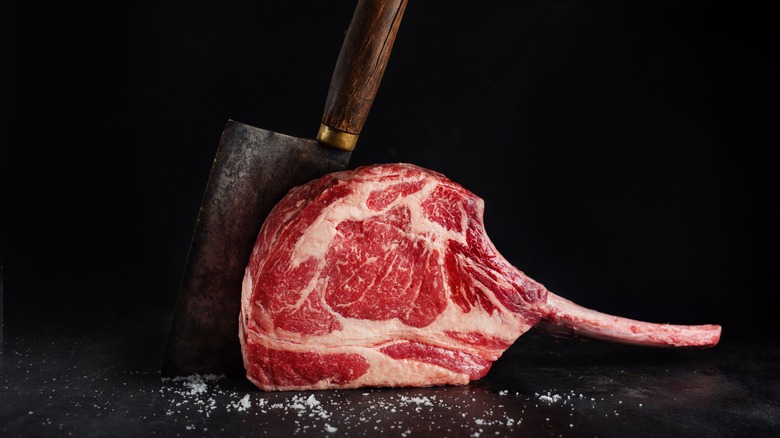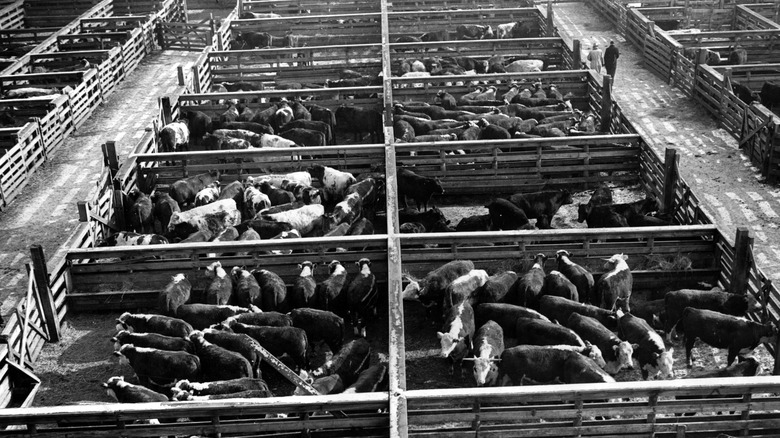Why Chicago Lost Its Status As The Meatpacking Capital Of The US
When Carl Sandburg declared Chicago the "hog butcher for the world" in his famed 1914 ode to the city, it wasn't merely boosterism but a statement of fact. For nearly 50 years — since the end of the Civil War, notes Encyclopedia of Chicago – the midwestern hub was acknowledged as the meatpacking capital of the U.S. and the leading butcher of hogs, cattle, and other livestock.
In 1865 during the last year of the Civil War, was when the Union Stock Yard was born. WTTW explains that Chicago was already a leading meat purveyor thanks to wartime contracts with the Union Army. However, the key factor that would propel Chicago past Cincinnati (then known as "Porkopolis") was the agreement between the city's stockyards and railroad companies to centralize operations in what became known as the Union Stock Yard. Among those who profited from the new arrangement were Gustavus Swift, who pioneered refrigerated meatpacking, and Philip Armour, who later became the city's foremost employer. Both made fortunes as railroads carried Chicago meat throughout much of the country. Business was so good, per Encyclopedia of Chicago, that branch operations were established in midwestern cities like Kansas City and Omaha.
Just as Chicago took the meatpacking crown from Cincinnati, Omaha would take Chicago's. However, this wouldn't last long and not for reasons anyone could have fathomed when the Union Stock Yard was thriving during the latter decades of the 19th century.
Changes in the meatpacking industry end Chicago's dominance
Chicago didn't lose its status overnight. For nearly 90 years, the Union Stock Yard was the country's preeminent meatpacking district. WTTW explains that during its heyday between 1893 and 1933, the city saw the slaughter of between 13 and 18 million livestock annually and provided daily work for as many as 45,000 laborers. Its downfall didn't occur until after World War II when highways superseded railroads as the primary shipping routes.
Encyclopedia of Chicago explains that just as the railroads revolutionized meatpacking in the 19th century, trucks did so in the next century. But whereas railroads had made a few cities hubs for meatpacking, the advent of trucking spread it far and wide. This shifted operations from traditional stockyards in meatpacking districts to smaller feedlots and meatpacking plants scattered around the U.S.
Omaha became the meatpacking capital of the U.S. by 1955. However, according to Wessels, it would hold that title for only a decade or so because its meatpacking industry declined rapidly towards the end of the 1960s. Kansas City's stockyards lasted until the early 1970s. KC Today noted that the industry was in decline since the 1950s due to floods, fires, and labor issues. The era really came to a close in the summer of 1971 when Chicago's long-running Union Stock Yard finally shut down (per WTTW). Chicago's time as "hog butcher for the world" officially ended.

